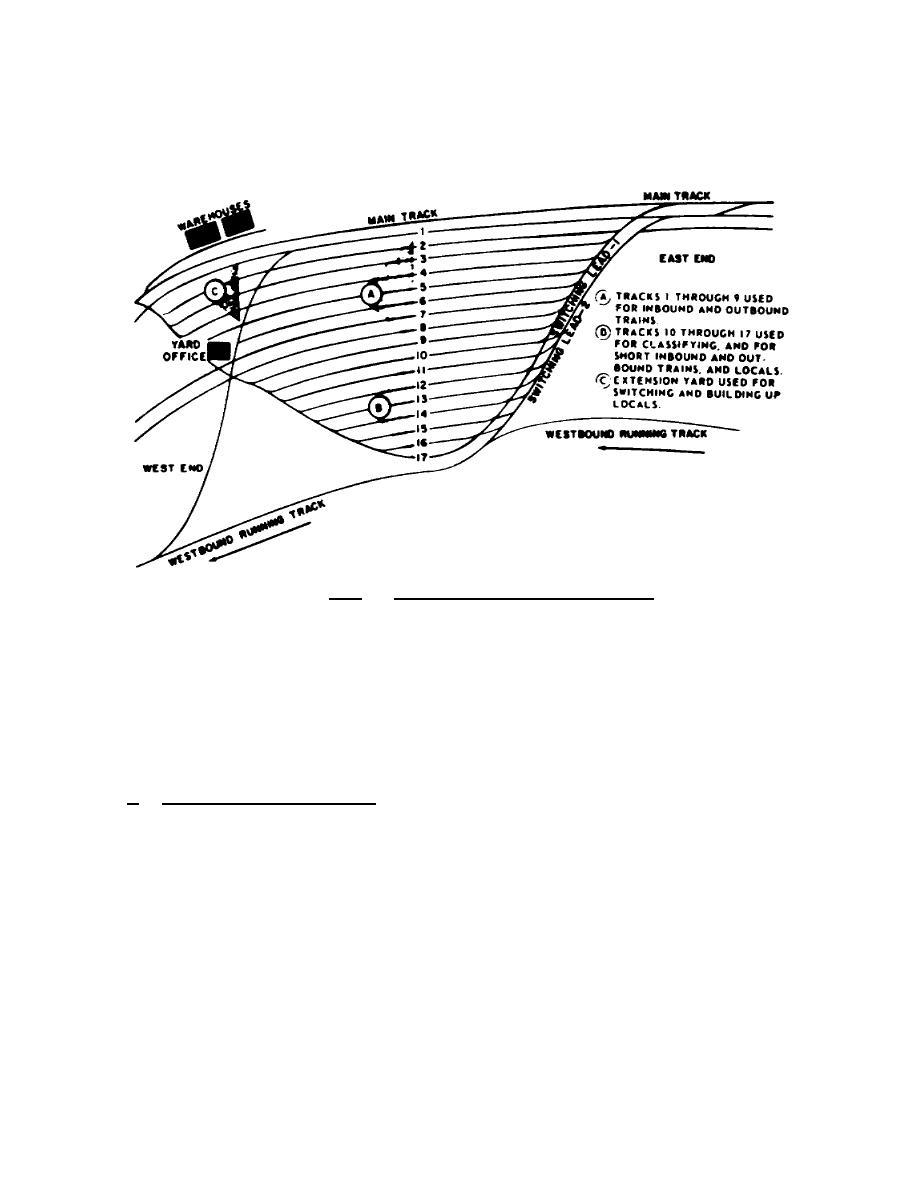
it. He may find it necessary to use two tracks if the clear ones are
too short. A typical combination yard is shown in figure 1.2. The
longer tracks shown at A are used interchangeably for inbound and
outbound trains and the remaining tracks for classification.
Figure 1.2. Typical Combination Yard.
1.5. TRACKS AND YARD CHARACTERISTICS
To speed up all phases of yard work, certain tracks are
desirable and necessary. These include main tracks outside the yard
tracks, divided leads, running tracks, switching leads, and
sufficient track length. Each of these is explained in a separate
subparagraph in the order mentioned.
a. Outside main tracks. With the main tracks outside the yard
tracks as shown in figures 1.1 and 1.2, time may be saved in
switching cars. If a main track separates a main yard from an
auxiliary yard, or an east one from a west one, crews are delayed in
crossing from one yard to another. Yardmasters have no control over
the main tracks, and the dispatcher's permission must be gotten
before the crews cross. Should a yard crew with 30 or 40 cars find
it necessary to cross main tracks, the switching lead and
consequently the entire switching operation may be tied up for 15 to
30 minutes depending on mainline traffic. An ideal arrangement is
to have the main tracks located several kilometers from yards or yard
tracks. While a main track with a low train density
6



 Previous Page
Previous Page
